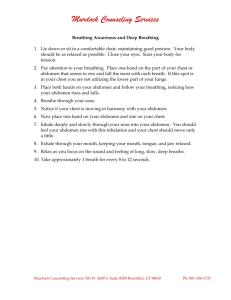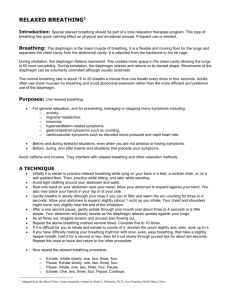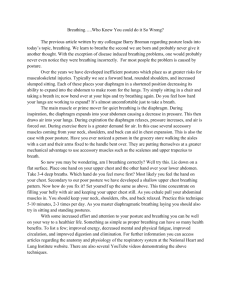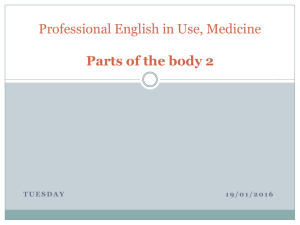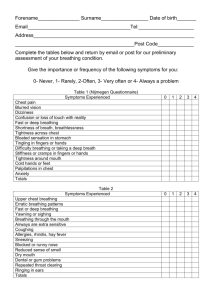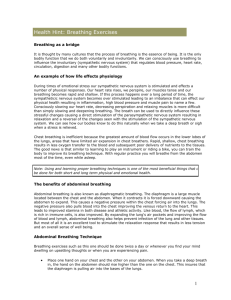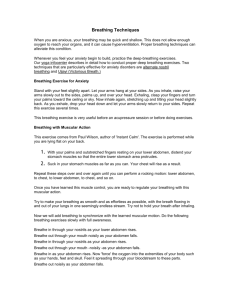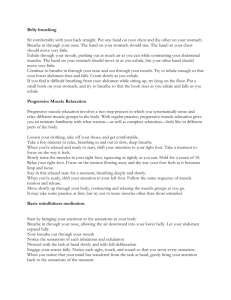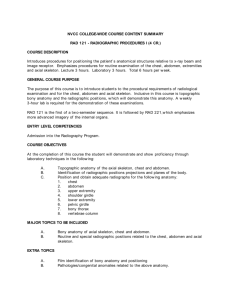DEEP BREATHING EXERCISES
advertisement
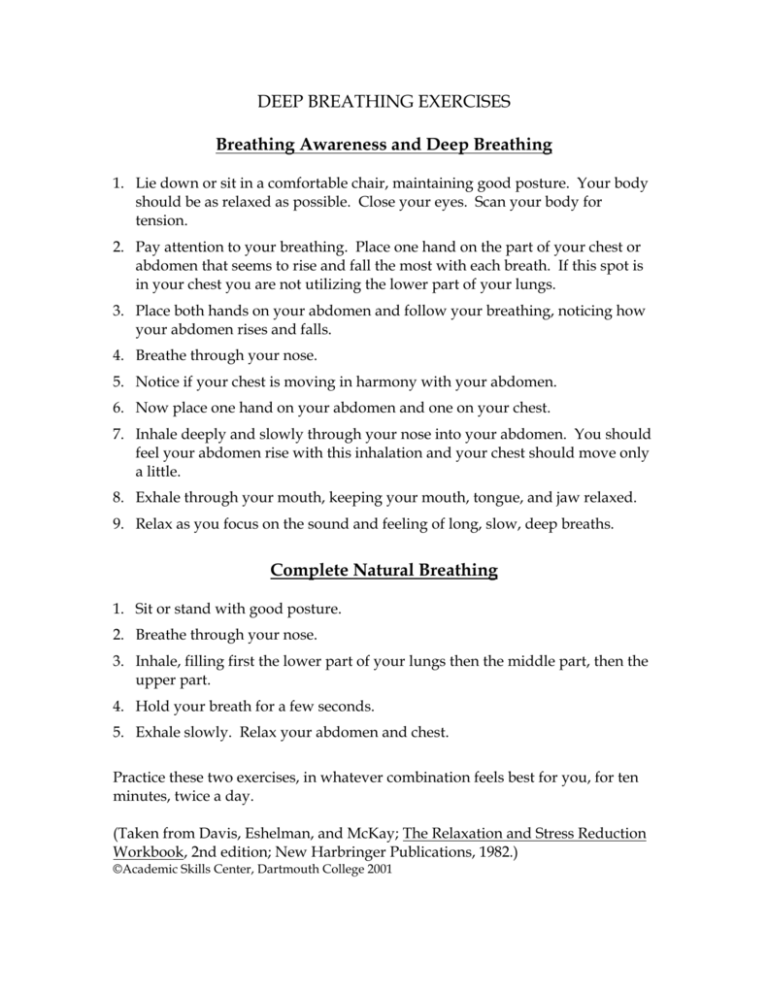
DEEP BREATHING EXERCISES Breathing Awareness and Deep Breathing 1. Lie down or sit in a comfortable chair, maintaining good posture. Your body should be as relaxed as possible. Close your eyes. Scan your body for tension. 2. Pay attention to your breathing. Place one hand on the part of your chest or abdomen that seems to rise and fall the most with each breath. If this spot is in your chest you are not utilizing the lower part of your lungs. 3. Place both hands on your abdomen and follow your breathing, noticing how your abdomen rises and falls. 4. Breathe through your nose. 5. Notice if your chest is moving in harmony with your abdomen. 6. Now place one hand on your abdomen and one on your chest. 7. Inhale deeply and slowly through your nose into your abdomen. You should feel your abdomen rise with this inhalation and your chest should move only a little. 8. Exhale through your mouth, keeping your mouth, tongue, and jaw relaxed. 9. Relax as you focus on the sound and feeling of long, slow, deep breaths. Complete Natural Breathing 1. Sit or stand with good posture. 2. Breathe through your nose. 3. Inhale, filling first the lower part of your lungs then the middle part, then the upper part. 4. Hold your breath for a few seconds. 5. Exhale slowly. Relax your abdomen and chest. Practice these two exercises, in whatever combination feels best for you, for ten minutes, twice a day. (Taken from Davis, Eshelman, and McKay; The Relaxation and Stress Reduction Workbook, 2nd edition; New Harbringer Publications, 1982.) ©Academic Skills Center, Dartmouth College 2001
